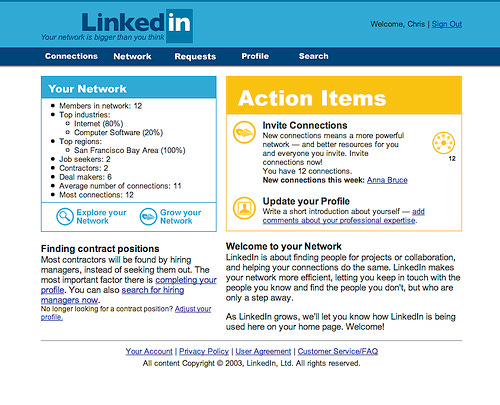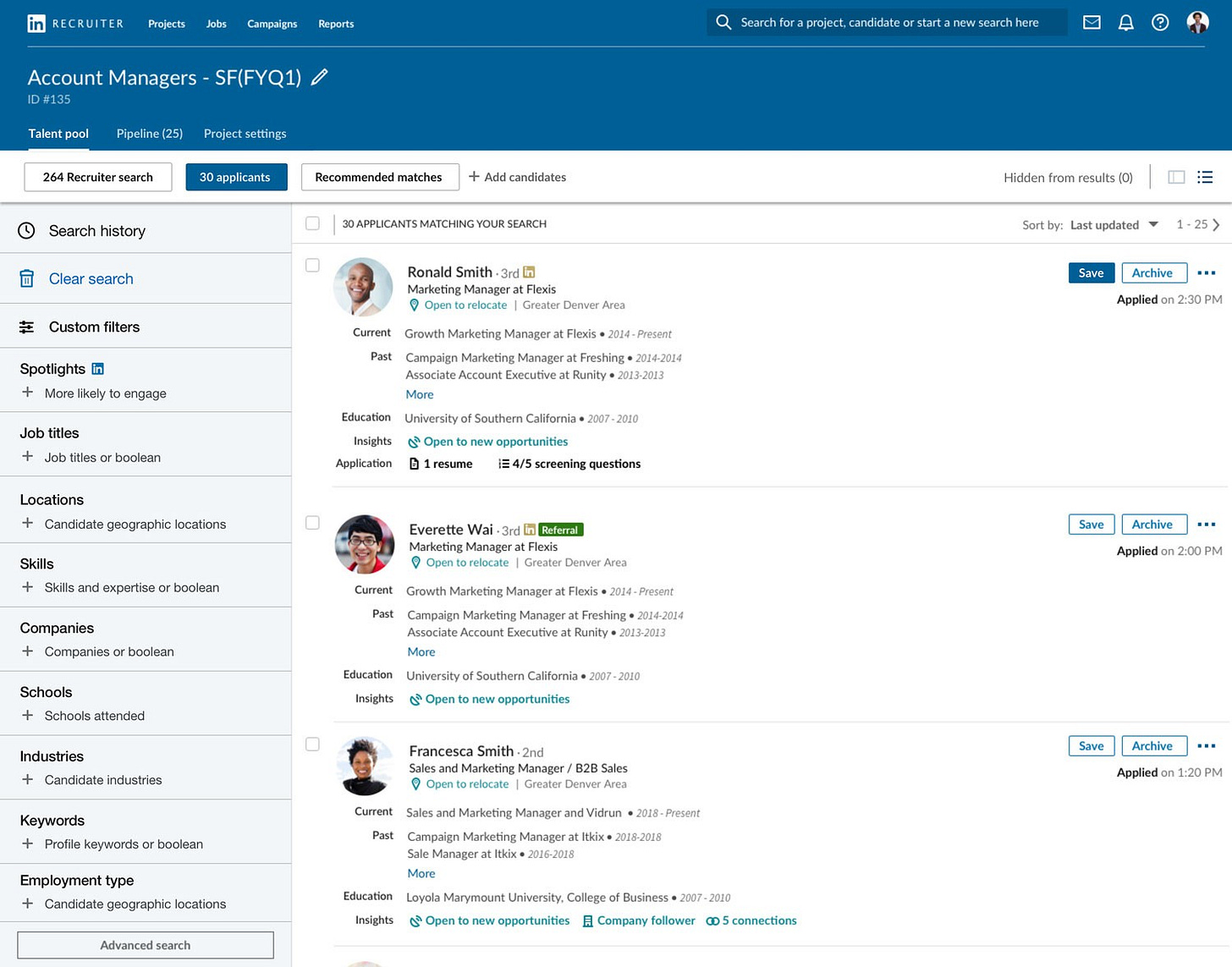The Great LinkedIn Unbundling?🎅Transcend Newsletter Christmas Edition
What will happen to their 660M users around the world?
Happy holidays everyone!
We looked under the tree and found an insightful analysis of the future of hiring, how wonderful! This week we focus on the much-prophesied LinkedIn unbundling, whether it will happen anytime soon and what it might look like.
👋Looking for opportunities or just want to say hi? Introduce yourself to the community here!
tl;dr: Won’t happen anytime soon, though LinkedIn could transform itself and power the next generation of vertical platforms that are currently struggling to compete due to network effects.

1) What’s LinkedIn?

Oh, LinkedIn... You've been an invaluable product, but I can't stand you.
To anyone who doesn’t know about it, LinkedIn has become the world’s largest professional network over the last decade, with over 660M users and 30M companies listed all around the world. Here’s a breakdown by country:

While it was originally just a professional social media platform, the company has successfully transitioned into many other fields, like recruiting (20+ million open jobs), corporate education (LinkedIn Learning), marketing (its fastest-growing segment in 2019), sales (LinkedIn Sales Navigator) and industry data solutions (Talent Insights).
2) Why should we care?
To understand LinkedIn's core value proposition, we need to understand its user network.
The network was originally built on the promise of a "digital resume + professional social media" platform. While the interactions between users were limited (see screenshot of the original interface), it spread like wildfire as the network became more populated and valuable to its users (for a primer on network effects, read the NFX Manual).

LinkedIn saw these emerging patterns and realized their future involved building more complex and varied social interactions among users, so they could bring their professional networks to LinkedIn, and start building a new set of connections on their platform. Thus came “shared connections”, company profiles, user followers, the content feed and tools, strong search capabilities and stronger recruiter and industry data capabilities.
3) The Great LinkedIn Unbundling?
Tech analysts have long prophesied a great LinkedIn unbundling, mostly because the dominant professional network for tech professionals is instead Twitter, but will this happen anytime soon?
I’ll argue it won’t, though LinkedIn’s dominance may look very different in just a few years.
Let’s dive in. LinkedIn had built a massive professional network that is highly defensible and positioned it to explore the recruiting space - one where their main strategic leverage is having a robust labor supply. As they leveraged their professional network to compete with Indeed, Monster or ZipRecruiter as large, industry-agnostic recruiting platforms, they focused on decreasing hiring complexity for employers and employees, building features like one-click applications and recruiter tools.

Their approach of global, sector-agnostic matching is opposed to more specialized hiring connections, as they doubled down on that vision of the "digital resume” by limiting the dimensions in which a candidate is assessed. For example, if you are hiring a social media manager, LinkedIn can give you 100 candidates all over the world that are generally qualified for the role and give you some hints as to what skills they actually have, but they won’t give you highly country or sector-specific matching variables since they choose not to over-specialize in specific roles or sectors.
This is exactly where the platform falls short for many today, as LinkedIn may not be well suited to serve the increasingly complex world of work and hiring.
As a response to the larger horizontal recruiting platforms that appeared in the last decades, a new player emerged: the vertical platform. Many of these new sector-specific hiring platforms were not initially hiring platforms at all, but they found a niche in which they could find the most relevant matches for industry-specific candidates and employers.
These new platforms have appeared in design (Behance, Dribble or even Figma, which now allows for public sharing of your work), software engineering (GitHub, StackRaft), sales (Bravado), specific communities (GirlBoss, HireClub), and many more examples (these often being largely informal, such as Twitter).

While these smaller platforms can focus on match relevance (for both employers and employees) over sample size, one of the main issues is user adoption (labor supply): it is quite difficult to get job candidates to move away from the largest professional network (LinkedIn) to a more niche platform. Who wants to fill out yet another profile with professional experience, skills and job preferences?
This is where LinkedIn could ride the current wave of vertical professional networks, by establishing itself as the key player at the identity level: LinkedIn could integrate with all these new platforms that focus on the application level, and ultimately connect them to the employee's professional identity. If LinkedIn focused on the identity layer, the growth of these vertical-specific plays could blossom, and surpass its main bottleneck of adoption.
LinkedIn has entered every single market there is to enter, which is arguably its biggest strength and strategic moat, however, it cannot cater to the needs of every employment market and vertical: allowing other players to build "on top" of that identity layer should benefit both LinkedIn and accelerate the growth of these vertically more relevant platforms, which will be better for everyone.
Ultimately, I see LinkedIn enabling millions of hires through other platforms built at the application layer that can truly redefine hiring for the modern economy, by specializing in the niches they understand best and integrating with the main identity player in LinkedIn.
What will these new vertical hiring platforms be in the next decade?
For more on our theses, visit our Open Theses.
What do you think? We’d love to get your thoughts, please leave a comment or reply to this email!

☀️The Transcend Fellowship will be kicking off in January and we will announce our Fellows to the world next week. Follow Transcend Network (@transcendnet) on Twitter to learn about them!
🛠️In Meet the Low-Wage Workfoce, Martha Ross (Brookings Institute) gives an overview of the demographic profile of the average US low-wage worker, one that is often overlooked by analysis of the future of work!
📖Different perspectives on edtech’s role in higher education: in a criticism of OPMs (private online course providers), one of edtech’s fastest growing sectors, TCF argues colleges should take greater control over their online course offerings.
🔥My Hope for the Future of Work is a great read on the most promising directions work might change over the next decade.
🎥Missed the Data Science roundtable? AWS data scientist Mustafa Waheed talked to Transcend Network and friends about how to break into the field and more. Check out the recording here.
📈Old but important analysis on how labour productivity growth has stalled, and how firms have changed their incentives to invest in technology vs training.
🤖Saturdays.ai, a global community of AI students, had a Demo Day in Madrid you can check out here to learn about their projects.
👋Looking for opportunities or want to say hi? Introduce yourself here!

All the updated job opportunities can be found on our Job Board!
Growth Lead | Customer Support Lead | Partnerships & Community Lead - Eva Tech
Associate Director for Energy - Deep Science Ventures
Microverse - Product Management
AngelList - Venture Financing Operations
London Interdisciplinary School - Strategy and Operations Associate
Fill out this form if you are looking to hire or get hired, and check out our job board for updated openings.
Thanks for reading another week! For any feedback, requests or ideas, reply to this email.
Alberto(alberto@transcend-network.com) & Michael (michael@transcend-network.com)


